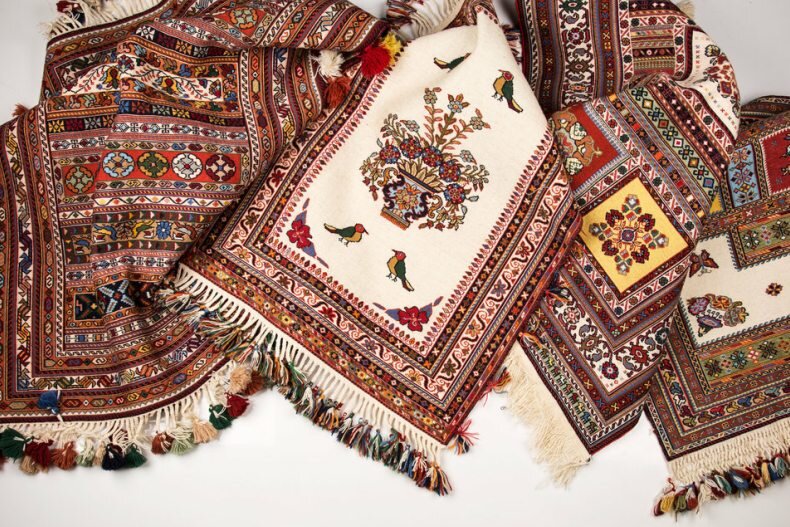Iranian kilims on show at Florence exhibit

TEHRAN – Iranian kilims from North Khorasan province are currently on show at the 86th edition of the International Handicraft Exhibition (Mostra Internazionale dell'Artigianato) in Florence, Italy, IRIB reported on Friday.
Several workshops, master classes, and special activities are organized on the sidelines of the exhibit, which hosts over 400 exhibitors from all over Italy and other counties including France, Turkey, Tunisia, Morocco, Peru, Egypt, India, Iran, Madagascar, Pakistan, Nepal, and Tibet Autonomous Region.
The exhibit, which is held in Fortezza da Basso, a centuries-old fortress, will come to an end on Sunday.
Over 15,000 artisans and crafters practice 61 handicrafts fields across Iran’s North Khorasan province, which is famed for its wrestling tournaments, the remarkable citadel of Belqays, and the partly preserved stepped village of Roein.
Kilim is a pileless floor covering handwoven in most places where pile rugs are made. The term is applied both generally and specifically, with the former use referring to virtually any rug-like fabric that does not have a pile.
When used specifically the term refers to a more limited number of techniques, including slit tapestry, warp sharing, and various forms of interlocking tapestry weave.
The kilims are often woven on narrow looms, and two mirror-image pieces are sewn together along the long edge to produce the completed kilim. The vertical color junctions involve a discontinuity of the wefts, the colored yarns that produce the design. At these boundaries, there are small slits in the fabric. Extremely fine kilims of silk were woven for the Safavid court (1502–1735), possibly in Kashan.
Persian carpets are sought after internationally for their delicate designs and their good quality. Among Persian carpets, particularly those of the classic period, the medallion may represent an open lotus blossom with 16 petals as seen from above, a complex star form, or a quatrefoil with pointed lobes.
ABU/ AFM
